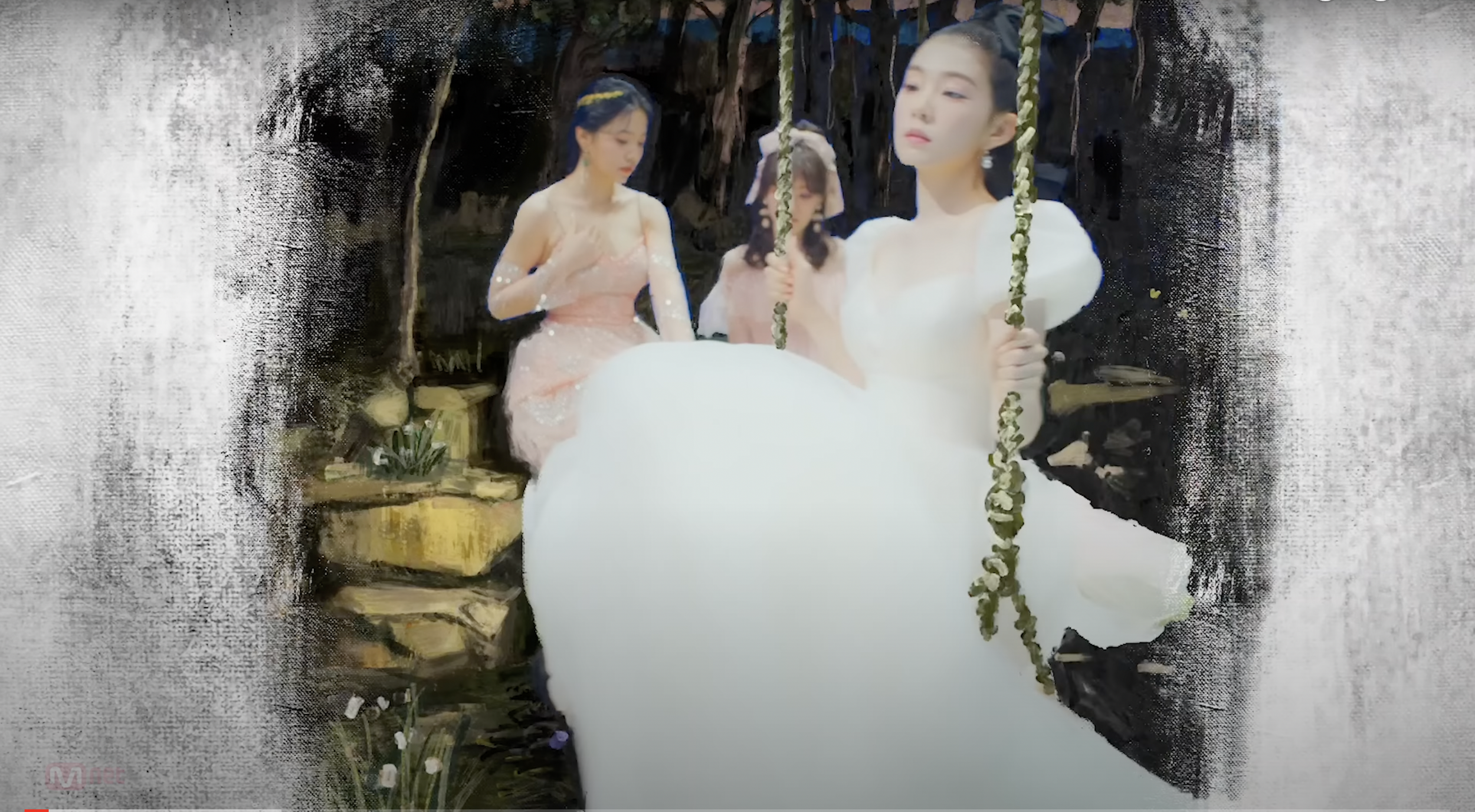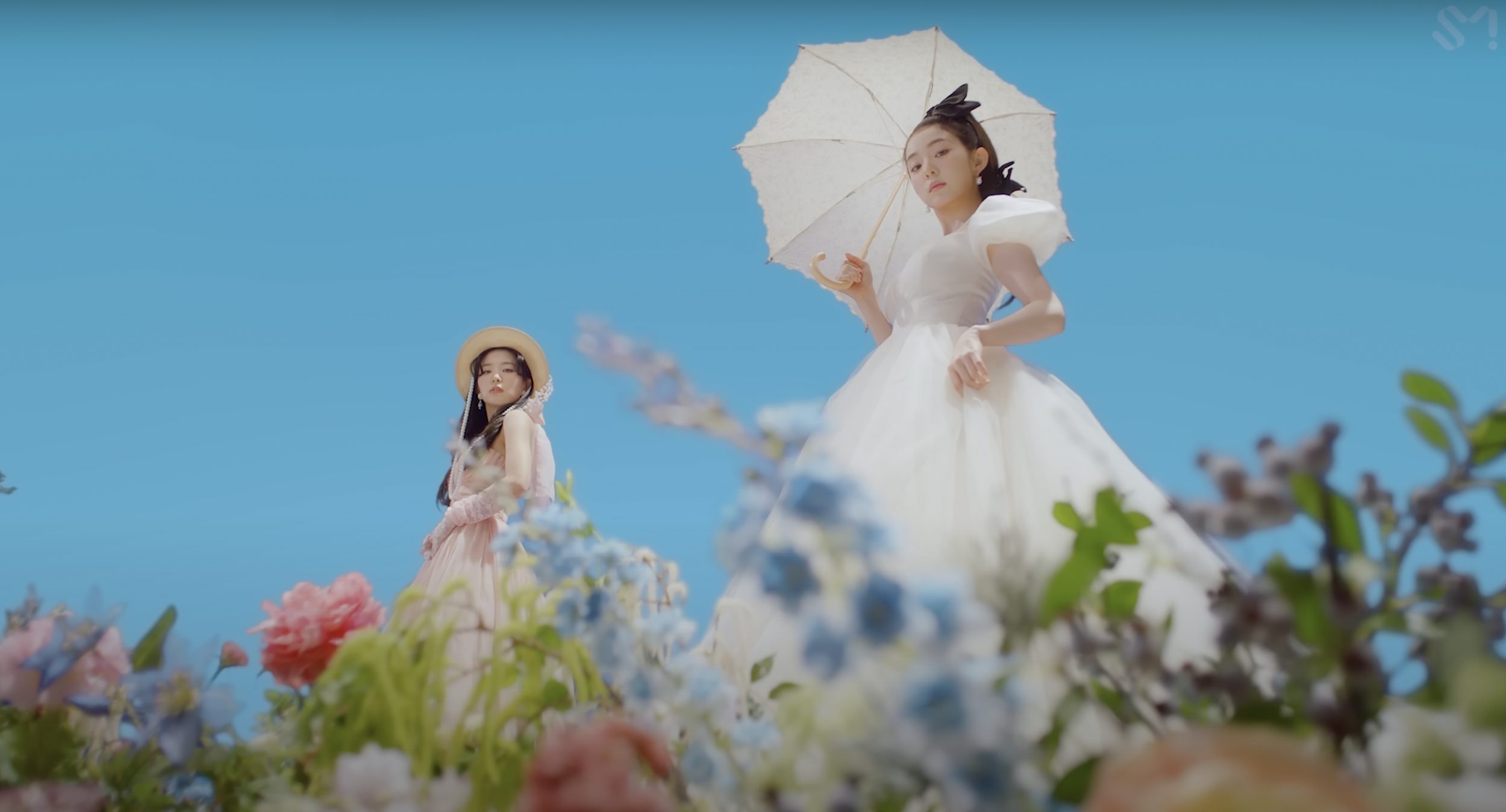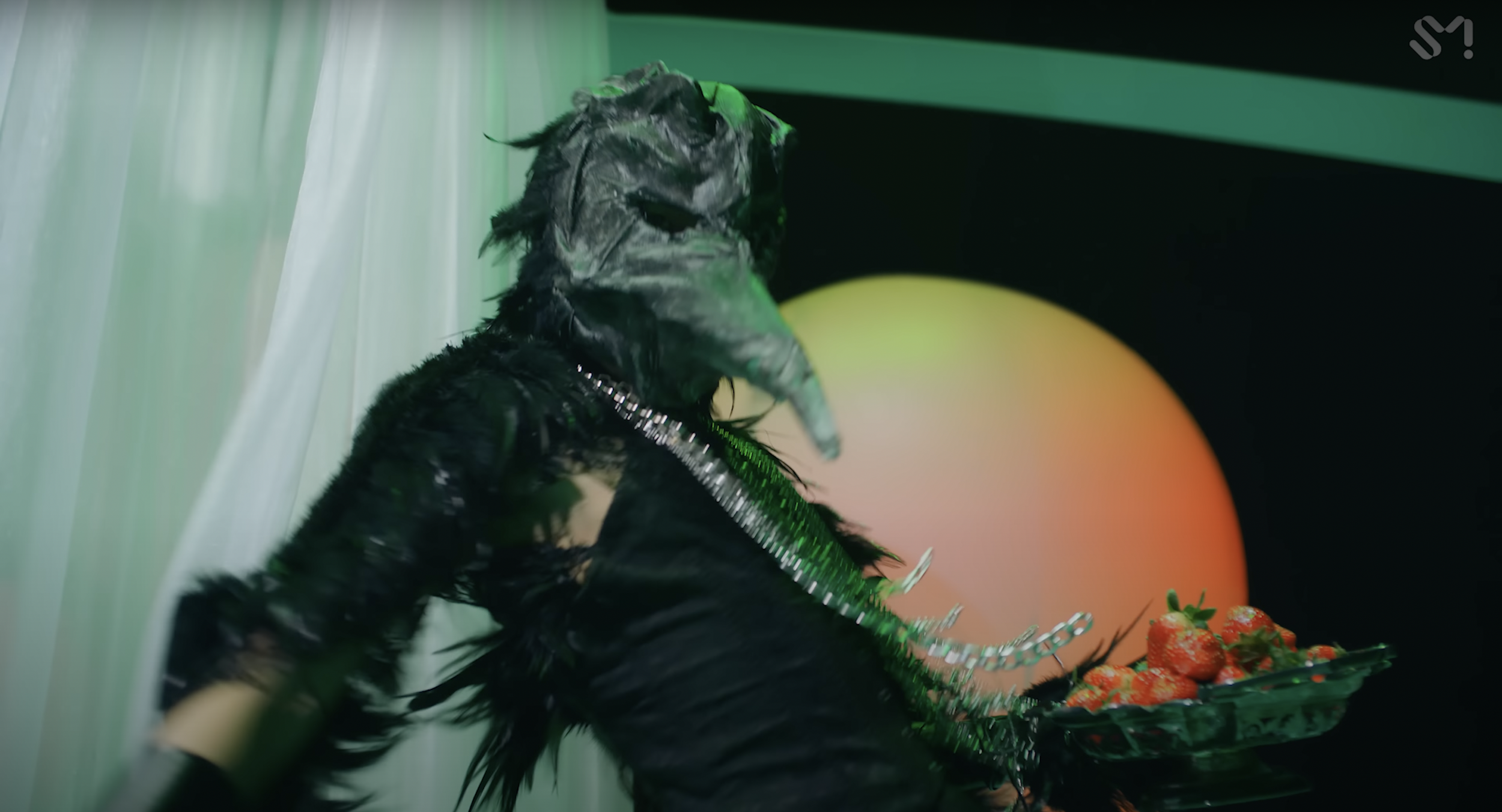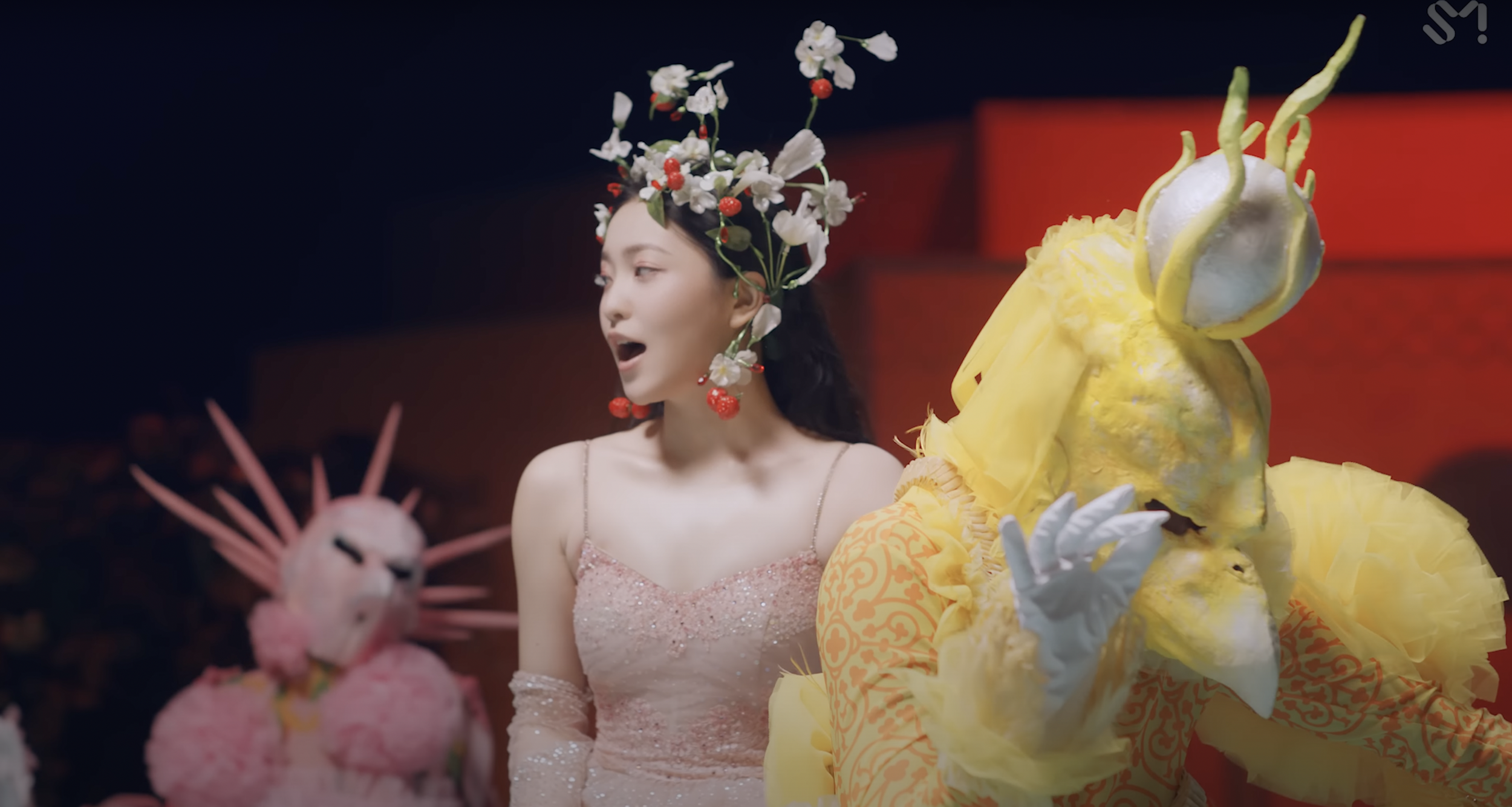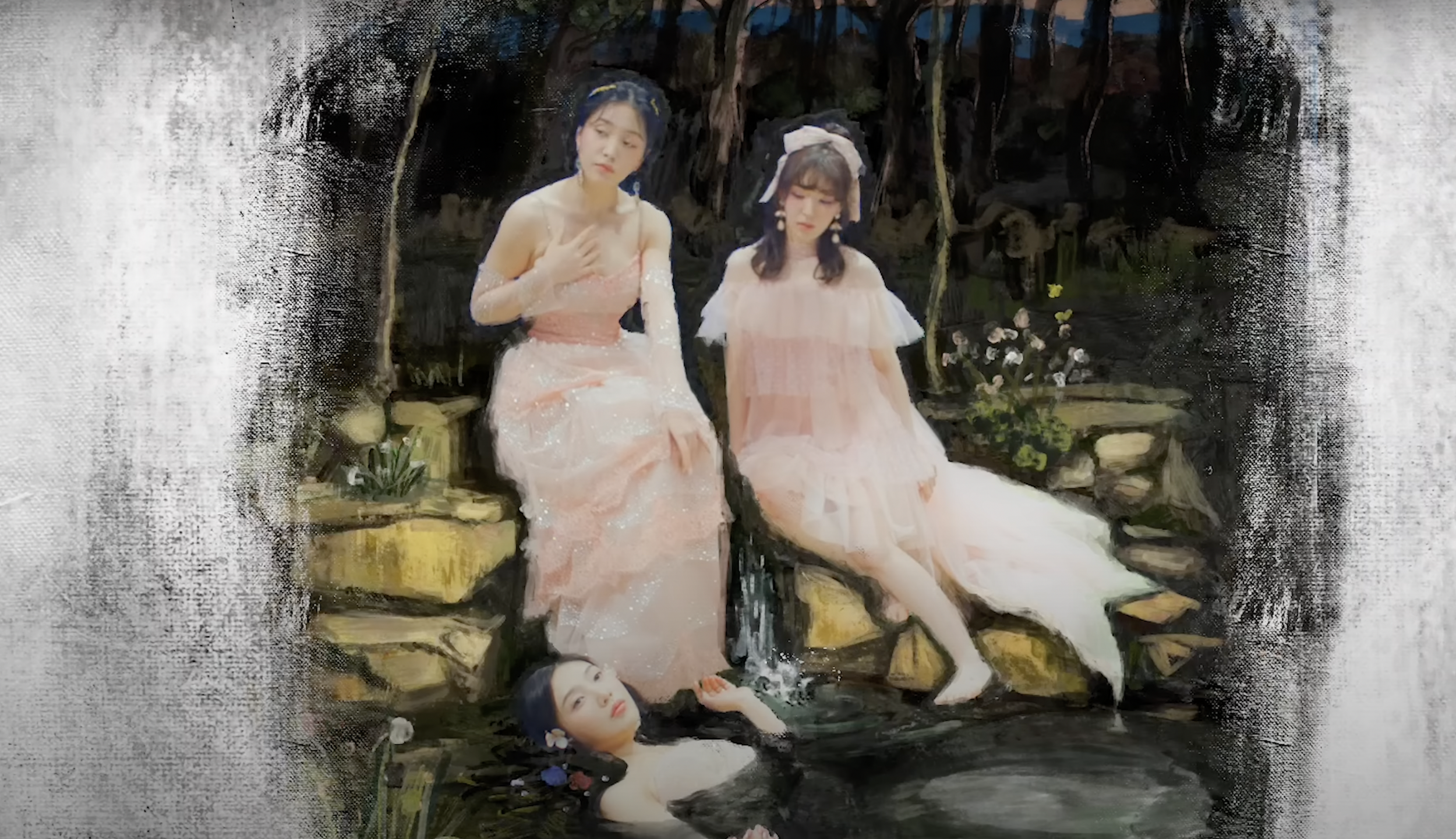The Surrealism of Red Velvet
Let’s talk about beauty.
Lush, gorgeous imagery abounds in Red Velvet’s work, but the source is often mired in destruction. In albums such as “The Perfect Velvet” the group flirts with evocative danger as femme fatales seeped in imagery that evoke nostalgia of Old Hollywood film noir or even the collages of feminist artist Barbara Kruger.
Red Velvet’s music has often flirted with the cinematic or high fashion worlds: here, the five women of Red Velvet have found a propensity for exploring the darker side of femininity. They sport haute couture and use tropes of womanhood to cast themselves into the viewers often find themselves in. They chastise a man with, “You got me feeling like a psycho” in their most daring release from the “The Reve Festival Finale”. They are never afraid to be seen as the crazy ex.
This Spring Red Velvet released their most ambitious album yet “The Reve Festival 2022 - Feel My Rhythm.” The album’s imagery is notable this era not just for how sophisticated it is, but for how rich it is with references to European art movements. This is significant because Red Velvet consists of five Korean women: Irene, Seulgi, Wendy, Joy, and Yeri. Historically, Korean women have been written out of art history. When I was in art school, I did not learn about one Korean or Asian artist with the exception of Yoko Ono - and that was by proxy to her husband, John Lennon.
Red Velvet’s “Feel My Rhythm” , then, finds these women, all in their late twenties to early thirties, writing themselves into the history books. This genre of art fuses music, conceptual frameworks, and feminist imagery to create something wholly ambitious in K-Pop: “Feel My Rhythm” asks you to view these five Korean women as real artists.
Throughout four generations, Korean pop, abbreviated and known widely as K-Pop, has commodified the innocence of youth. The genre can be traced to 1992 on an MBC talent show stage when three teenagers named Seo Taiji and the Boys introduced hip-hop to a shocked audience. Tajij’s goal was to blend two genres of music, pop and hip-hop, with the Korean language. Like any good youth, he used hip-hop to provoke, and K-Pop has reinvented what the word “provocative” means across the next four generations. In modern times, adolescents debut in their early teens to experience bursts of popularity before their group is typically disbanded by the company. Age and waning popularity are the primary reasons for disbandments; these causes can be mutually exclusive.
K-Pop, at it’s best, is challenging. There is a paradox within the industry that idols themselves cannot challenge the industry status quo, but they usually challenge cultural status quos for their crossing of gender boundaries, particularly with men, but recently with women too.
K-Pop is credited with the beginning of the Korean Wave (hallyu) in the early 2000s, but it is not until recently that Korean pop culture became mainstream with the global success of boy group BTS. South Korean cinema, too, has recently reached the cultural zeitgeist with Parasite, the first foreign film to win Best Picture at the Oscars, and the viral success of Netflix’s Squid Games.
Red Velvet represents the beginning of the third generation of girl groups in K-Pop. Their debut in 2015 was ushered in by SM Entertainment, one of the traditional “Big Three” companies, that strategically sought global success with BoA, first in the Japanese market, and then Girls Generation, which the company positioned for global takeover.
SM’s goals have always been ambitious, at times to their own detriment. While other companies such as Big Hit have cracked the code of what appeals to a Western audience, SM has refused to play it safe. With every year the company’s leader Lee Soo-Man has grown more ambitious with the story he wants to tell about this industry. Recently, SM introduced the Kwangya Multiverse, an imaginary world where the idols in K-Pop are akin to superheroes and whose origin stories aren’t that far removed from a Marvel backstory.
This is not new territory for Lee. In 2007, the company created a movie for their boy group Super Junior that would expand the characters fans were already familiar with. Attack On the Pin-Up Boys was a campy mystery that gave each member of Super Junior to flex his acting chops and participate in a universe far bigger than the one they inhabited on stage.
Eight years later when Red Velvet debuted, SM had learned from the success and failures of previous groups. Girls Generation was beginning to phase out and the company was eager to debut a group that could pick up where SNSD left off.
Red Velvet’s shift to darker themes, that are the antithesis of their debut single “Happiness”, reflects SM’s own curiosity to explore textures and interior worlds that are complex. SM’s debut of NCT just two years later would be their biggest gamble yet, as the concept of the group would be a rotating group of boys who would create music that was more akin to European hyper pop than K-Pop.
As NCT would mold the future of the company, Red Velvet would be given license to explore themes that are murkier and oftentimes strange. Red Velvet’s lore, if there is one, exists inside of a fairy tale that could dissolve into a nightmare at any moment.
“Through this album, we wanted to express Red Velvet’s unique “Imaginative World” worldview so we expanded and built on the themes that were showcased in our previous albums,” Seulgi explained in a recent interview with Billboard about their latest album. “You can see the connection to our previous works as well as a new side of Red Velvet that you haven’t seen before. Also, our “Feel My Rhythm” music video continues the dark fairytale concept for a new start.”
The opening of “Feel My Rhythm”, leader Irene would note in several interviews, begins with a sample of the composer Bach’s “Air on the G String.” To me, the sample also announces a nod to their greatest work “Psycho”. The strings in both of the song’s openings are similar to that of an opening of a ballet. Inside of this imaginary world, demons and princesses coexist.
“[‘Feel My Rhythm’] has a classic and modern sound,” Irene told Elite Daily. “Above all, it’s a track with an energetic yet elegant vibe that Red Velvet can pull off very well, once again showcasing our unique identity.”
Art abounds in the video. From the opening shot, viewers who are trained or familiar with art history might recognize several cues to paintings from the Rococo, Renaissance, Baroque and Surrealist eras of art.
Nearly all of the pieces referenced in the “Feel My Rhythm” video offer thought provoking takes on femininity and anxieties throughout the history of artmaking. One such painting is “The Swing” by Jean-Honore Fragonard which Irene recreates. In Fragonard’s depiction from 1767, a woman is suspended high above the ground wearing pastel pink gown takes part in the leisurely and aristocratic activity of swinging. This woman, likely of high social status, sits on a swing that is connected to an enormous tree. The swing, which holds a velvet cushion, is activated by two older men on either side of her use whose connected ropes allow her to swing back and forth.
“Intimate garden-parks like the one depicted in The Swing were common sites for aristocratic leisure. These outdoor spaces were viewed as less formal than domestic interiors,” wrote Dr. Ashley Bruckbauer for SMART History’s website. Situated on the grounds of private country estates and pleasure pavilions, garden-parks provided a retreat from the strict regulations of elite society.”
Pleasure abounds in Red Velvet’s world, but fear is not far behind. Claude Monet’s “Woman with a Parasol”, from 1875, depicts what the curators of the National Gallery of Art consider a “feeling” of a family portrait without depicting a literal one. “The brevity of the moment portrayed here is conveyed by a repertory of animated brushstrokes of vibrant color, hallmarks of the style Monet was instrumental in forming,” the curators write in the museum’s archives. “Bright sunlight shines from behind Camille to whiten the top of her parasol and the flowing cloth at her back, while colored reflections from the wildflowers below touch her front with yellow.”
Darkness follows, even in these brighter moments. What I am drawn to continuously in this video are the birds, which are likely a sculptural interpretation of Max Ernst’s Surrealist painting “The Barbarians.” Ernest, a leader of the Dada movement, specialized in creating alternate realities of calamity and uncertainty. In “Feel My Rhythm”, the birds are depicted as billowy costumed dancers with large beaks. At times, it recalls the dreamscape of “Swan Lake” or the humor of “Sesame Street”. But often, they are imposing, particularly as they surround Seulgi.
“This is going to be a crazy night,” she sings.
Ernst’s depictions of birds were typically filled with dread, likely for an imposing war, as curators at the Metropolitan Museum of Art observe. In “Feel My Rhythm” the birds represent the dualities of light and dark that Red Velvet hold.
But I’m most captivated by the image of Joy peacefully laying in a body of water, with flowers adorning her hair. Her hands are tilted up as she gazes to the sky. The scene is a replica of Sir John Everrett Millais’, Bt painting “Ophelia”. The portrait depicts Shakespeare’s Ophelia who is driven mad by the murder of her father by her lover Hamlet. Seeped in anguish, Ophelia falls into a stream and drowns.
The flowers, as Millais painted them, all represent forms of death. “My martyrdom is more trying than any I have hitherto experienced,” the artist wrote in July 1851. Beauty and death abound inside the Reve Festival.
Red Velvet’s allegories of death, mental illness, anxieties, and of course, beauty are what makes them a compelling group. Viewed at face value, their imagery could be read as femme fatales, but I find something far more compelling within Red Velve’ts work. They are women who are allowed to have complexities, and who can experience a range in identities. This tension is represented in the numerous works, all by men, which Red Velvet depict. But I’m curious to how their experiences, as women and afs female idols, subjugate a role they have been asked to play: Submissive women.
“Korea has been, and still is, a strongly segregated society in terms of sex, mainly becuase of the influence of Confuscianism,” scholar Kim Heisook wrote in Feminist Philosophy in Korea: Subjectivity of Korean Women. “Women’s primary role has been defined by being a mother (homemaker) who was supposed to perpetuate the traditional family clan by giving birth to sons in accordance to Confucian values.”
“I’m a little monster,” Irene and Seulgi both proclaim in the title track of their sub-unit. Red Velvet provokes our ideals of how we view young Korean women. In this fairy tale, women are given the freedom to be psychos; they beckon you to dance with them; they proclaim that they are the queen of their own Queendom; and then they ask you to beg for their love.
“Feel My Rhythm”, the music video, bridges together the history and visuals which Red Velvet stand on. It reminds me of why scholarship is needed in K-Pop to further unravel the mass media that the genre fuses together in sound, socio-political culture, and in visuals. Speed is a keyword I think of often in K-Pop.
“As we prepared for this EP, I definitely felt we’ve matured a lot. As we gain more years and experience in our careers, the work has become more natural and familiar compared to when we first debuted,” Irene said upon the release of this album. “We can grasp each process faster and our teamwork as a group has gotten so much stronger.”
Red Velvet’s imaginary world might be a fairy tale, but they remind us that the mysterious creatures cloaked in darkness might just be us.
SOURCES:
This article came from wide research from several museums and art institutions, including:
SMART History: The Center for Public Art History
The Metropolitan Museum of Art
ENVI Media has a list of all images used and history movements referenced in the video
Kim, Heisook. (2009). Feminist Philosophy in Korea: Subjectivity of Korean Women. Signs. 34. 247-251. 10.1086/590977.
Due to all images being subject to copyright laws, you will need to click on the artwork to view it. Artwork credits:
Jean-Honoré Fragonard, The Swing, oil on canvas, 1767 (Wallace Collection, London)
Sir John Everett Millais, Bt, Ophelia, 1851-2, Oil on Canvas, Tate Collection
Claude Monet, Woman with a Parasol - Madame Monet and Her Son, 1875, oil on canvas, National Gallery Museum of Art
Max Ernst, The Barbarians, 1937, oil on cardboard, Credit Line: Jacques and Natasha Gelman Collection, 1998






